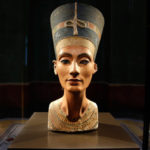 Crime
Crime  Crime
Crime  Technology
Technology 10 Hilariously Over-Engineered Solutions to Simple Problems
 Miscellaneous
Miscellaneous 10 Ironic News Stories Straight out of an Alanis Morissette Song
 Politics
Politics 10 Lesser-Known Far-Right Groups of the 21st Century
 History
History Ten Revealing Facts about Daily Domestic Life in the Old West
 Weird Stuff
Weird Stuff 10 Everyday Products Surprisingly Made by Inmates
 Movies and TV
Movies and TV 10 Actors Dragged out of Retirement for One Key Role
 Creepy
Creepy 10 Lesser-Known Shapeshifter Legends from Around the World
 Animals
Animals 10 Amazing Animal Tales from the Ancient World
 Gaming
Gaming 10 Game Characters Everyone Hated Playing
 Crime
Crime 10 Terrifying Serial Killers from Centuries Ago
 Technology
Technology 10 Hilariously Over-Engineered Solutions to Simple Problems
 Miscellaneous
Miscellaneous 10 Ironic News Stories Straight out of an Alanis Morissette Song
Who's Behind Listverse?

Jamie Frater
Head Editor
Jamie founded Listverse due to an insatiable desire to share fascinating, obscure, and bizarre facts. He has been a guest speaker on numerous national radio and television stations and is a five time published author.
More About Us Politics
Politics 10 Lesser-Known Far-Right Groups of the 21st Century
 History
History Ten Revealing Facts about Daily Domestic Life in the Old West
 Weird Stuff
Weird Stuff 10 Everyday Products Surprisingly Made by Inmates
 Movies and TV
Movies and TV 10 Actors Dragged out of Retirement for One Key Role
 Creepy
Creepy 10 Lesser-Known Shapeshifter Legends from Around the World
 Animals
Animals 10 Amazing Animal Tales from the Ancient World
 Gaming
Gaming 10 Game Characters Everyone Hated Playing
10 Once-Dead Languages That Have Been Revived
We all know that dead languages like ancient Egyptian existed in days gone by. However, thanks to modern science, those languages have been able to make a comeback and are now spoken today. Here are ten dead languages that historians have managed to revive today.
Related: 10 Extraordinary Languages That Do Not Involve Speaking
10 Hebrew
Although Hebrew was once a thriving language and a key part of ancient civilizations, by the 3rd century BC, Hebrew was on the decline. During this period, the Hebrew language was largely replaced by Aramaic, which was spoken in Isreal, Palestine, and other nearby regions at the time.
Despite this, Hebrew managed to stay afloat thanks to its use in religious written texts until about the 13th century, when the language died out. It went unspoken for several thousand years until the 19th century when a few scholars set out to bring the language back from the dead.
These scholars made a pact to speak only Hebrew at home and started several Hebrew newspapers. This was part of a Jewish Enlightenment period in which Jews attempted to connect with their ancient heritage.
The movement was a roaring success, and today there are roughly nine million native speakers of the language and approximately six million who consider Hebrew their mother tongue.[1]
9 Sanskrit
Sanskrit is a language that was dead by roughly the first millennium BC. However, thanks to its use in ancient Indian religious texts, the written script remained alive for several years.
Despite this, it wasn’t until the late 1800s that theosophists in India sought to help the language make an active comeback. This effort involved creating workshops, holding a Sanskrit competition, and even establishing Sanskrit as a language in schools and universities.
Today, Sanskrit is an official language of several Indian states, and there are roughly 25,000 speakers of the once-dead language today.[2]
8 Manchu
Manchu is a language that was native to the Manchuria region in Northeast China and was spoken extensively during the Qing Dynasty. Despite its strength during this part of China’s history, the language went into serious decline after the fall of the Qing dynasty. Manchu was replaced by Mandarin Chinese, and speakers of Manchu were prosecuted.
Despite this, a few speakers of Manchu remained in isolated villages in rural China. Thanks to these few speakers, there was enough knowledge of the language for it to start making a comeback in post-Mao China.
During this period, Manchu Chinese were no longer prosecuted the way that they had been in previous periods in Chinese history. In an attempt to honor their Manchu heritage, people began establishing Manchu language classes to bring back their lost language.
Today, there are still fewer than 1,000 speakers of Manchu globally. However, NGOs and nonprofits sponsoring Manchu classes hope to help increase these numbers in the coming years.[3]
7 Te Reo Māori
Te reo Māori is the language of the native New Zealanders. This group of people is of Polynesian descent and was actually the most spoken language in New Zealand at the start of the 19th century.
However, with increasing numbers of English settlers arriving in New Zealand during the 20th century, the language began to be spoken only in Māori communities. What’s more, by 1858, The Native School Act had been established, which outlawed speaking te reo Māori.
Thanks to this law, the language took a nosedive and was largely considered extinct. In the 1970s, however, a group known as Ngā Tamatoa, or the Young Warriors, began to fight for te reo to be not only taught in schools but encouraged.
Roughly twenty years later, New Zealand made te reo one of the country’s official languages through the Maori Language Act 1987. Today, there are nearly 180,000 te reo speakers, with the majority concentrated in New Zealand.[5]
5 Manx
Manx is the native language of the Isle of Man in the United Kingdom. The language, although spoken predominantly on the island, began to go into decline around the 19th century due to the increased use of English. Islanders felt that Manx was a language that wouldn’t be useful in the future and that raising their children to speak English would set them up for a better future. By 2009, UNESCO officially declared the language dead.
Despite this, the language has managed to make a recent comeback, largely thanks to a man named Brian Stowell. Stowell read an article about a man mourning the decline of the language in 1953 and was inspired to learn it for himself. Together with the author of the article, the two men formed a group that would get together to listen to recordings in Manx and attempt to bring back the language.
Today, the movement has taken off, with some primary schools on the island even teaching entirely in Manx. Currently, there are estimated to be nearly 2,000 Manx speakers, although levels of fluency may vary.[5]
5 Cornish
Cornish is the native language of Cornwall and was a Celtic language that was spoken in the area prior to Germanic Anglo-Saxon arrival in the area. Despite the strong Celtic presence in Cornwall, however, the language began to decline around the late 1200s.
The main reason for this was due to continued Anglo-Saxon migration to the area as well as the increasing popularity of Christianity. Since the Christian Bible hadn’t been translated into Cornish, more and more people began to speak English as opposed to their native Cornish.
By 1777, the last native Cornish speaker died, taking her native tongue with her. Despite this, modern scholars in the 19th century used written Cornish records and similar languages, such as Welsh and Breton, to revive Cornish.
Today, there are some families who are bringing up their children to speak the language, as well as local schools in Cornwall that are teaching the language. Although there’s no exact known number of speakers, it’s estimated that there are around 500 fluent speakers.[6]
4 Wampanoag
Wampanoag is a Native American language that is spoken by the Wampanoag Native American nation. The tribe largely inhabited southern Massachusetts and Rhode Island. However, they were largely wiped out by English settlers to the region in the 1600s.
English settlers who arrived made great efforts to assimilate Native American tribes, including the Wampanoag nation, into English culture. They established universities that were designed to teach English and Christianity to the nation. Due to this assimilation, native customs and the native language slowly began to decline.
By around the 19th century, the Wampanoag language, as with many other Native American languages, had died out. Despite this slow death of a language, in the late 1990s, a Wampanoag woman named Jesse Little Doe Baird set about to revive the language.
Using a Wampanoag translation of the Bible, she worked with professors at MIT to reconstruct the language. Although the language is by no means a common one, there are now said to be around 75 speakers of the language, and further efforts to teach the language in Native American communities mean that number may continue to grow.[7]
9 Livonian
Livonian is the native language of the people of Latvia and was spoken by natives living in Latvia and eastern Estonia. Livonian began to die out due to increased contact with Baltics, who moved into the region in the 19th century.
Despite that, the language survived somewhat until 2013, when the last native speaker of the language passed away. Thankfully, ever since Latvia gained independence from Russia, the country has put a heavy focus on reviving Latvian culture. Part of this is an effort to bring back Livonian, and today there are estimated to be a few dozen speakers of the language.[8]
2 Irish Gaelic
Irish Gaelic is the native language of Ireland and is closely related to Scottish Gaelic. Like Scottish, Irish Gaelic suffered greatly in the 1600s thanks to laws established by England that made it illegal to speak Irish Gaelic. Children who were caught speaking the language in school were punished, and legislation was established to ensure it wasn’t spoken in government.
Thanks to these activities, Irish Gaelic had largely died out by the early 19th century. It was only really spoken in a handful of rural communities, and even then, it was mostly spoken at home to avoid public persecution.
In the later half of the 19th century, however, there was a resurgence of interest in the native Irish language. Led by a man named Eoin MacNeill, a group of individuals formed the Gaelic League with the goal of fighting for Gaelic to be spoken once again in government and taught in schools.
The movement was a success, and Irish Gaelic slowly became reintroduced to schools, government, and local communities. Today there are estimated to be between 40,000 and 80,000 native Irish speakers.[9]
1 ‘Ōlelo Hawai’i
‘ŌleloHawai’i, more commonly called Hawaiian, is the native language of Hawaii. Like te reo Māori, this is a Polynesian language. It was originally strictly a spoken language that had no form of written text.
When English settlers arrived on the islands in the 18th and 19th centuries, English was declared the official language of the then country and replaced Hawaiian in common society. What’s more, Western views that Hawaiian traditions and language should be erased led to the gradual suppression of the language. By 1898, when Hawaii was declared a U.S. territory, the language was officially banned from schools, and Hawaiians were prosecuted for speaking it.
The result is that the Hawaiian language was, for the most part, extinct by the mid-1900s. Still, a new interest in Native culture began in the 1960s and 1970s, when locals fought to bring back the Hawaiian language. In 1978, Hawaiian was recognized as an official language of the state; it is the only U.S. state with two official languages.
Today, ‘Ōlelo Hawai’i is taught and encouraged in Hawaiian schools and is an integrated part of the culture on the islands. There are around 2,000 speakers of the language, and the number seems to be on the rise.[10]








